The story of Jimmy Red bourbon is an American one, namely of the South. It starts in a hidden corner on a coastal island and ends in a bottle of whiskey that conjures a sense of place, emblematic of the magic of South Carolina’s agricultural richness.
At the heart of this particular story are Ann Marshall and Scott Blackwell, a couple who owns and operates Charleston’s High Wire Distilling Company. I visited their distillery—which opened in 2013—before I learned about their bourbon. I was in town for a conference, which found me in their parking lot sipping beer in the hot sun. High Wire is in the Upper King Street area of Downtown Charleston, just north of the bars and restaurants that light up the street when the sun begins to set. It’s located in an old Studebaker dealership from the 1940s, which transitioned easily into a distillery with a large, open production floor, comfortable tasting room, and a lofted office. Little did I know that just beyond the glass partition that separated the bar stools from the wooden barrels was a landrace corn bourbon maturing to near perfection.
Marshall and Blackwell both had long careers in the natural foods world (which is how they met—at work) before opening the distillery. Blackwell has owned a number of food companies including Immaculate Baking, which he started in his garage (and where he set the world record for baking the largest cookie in history). Marshall ran the marketing department there before moving to another company where she helped launch small food brands. Blackwell sold his baking company to General Mills in 2012, and it was then they decided to open a business together.
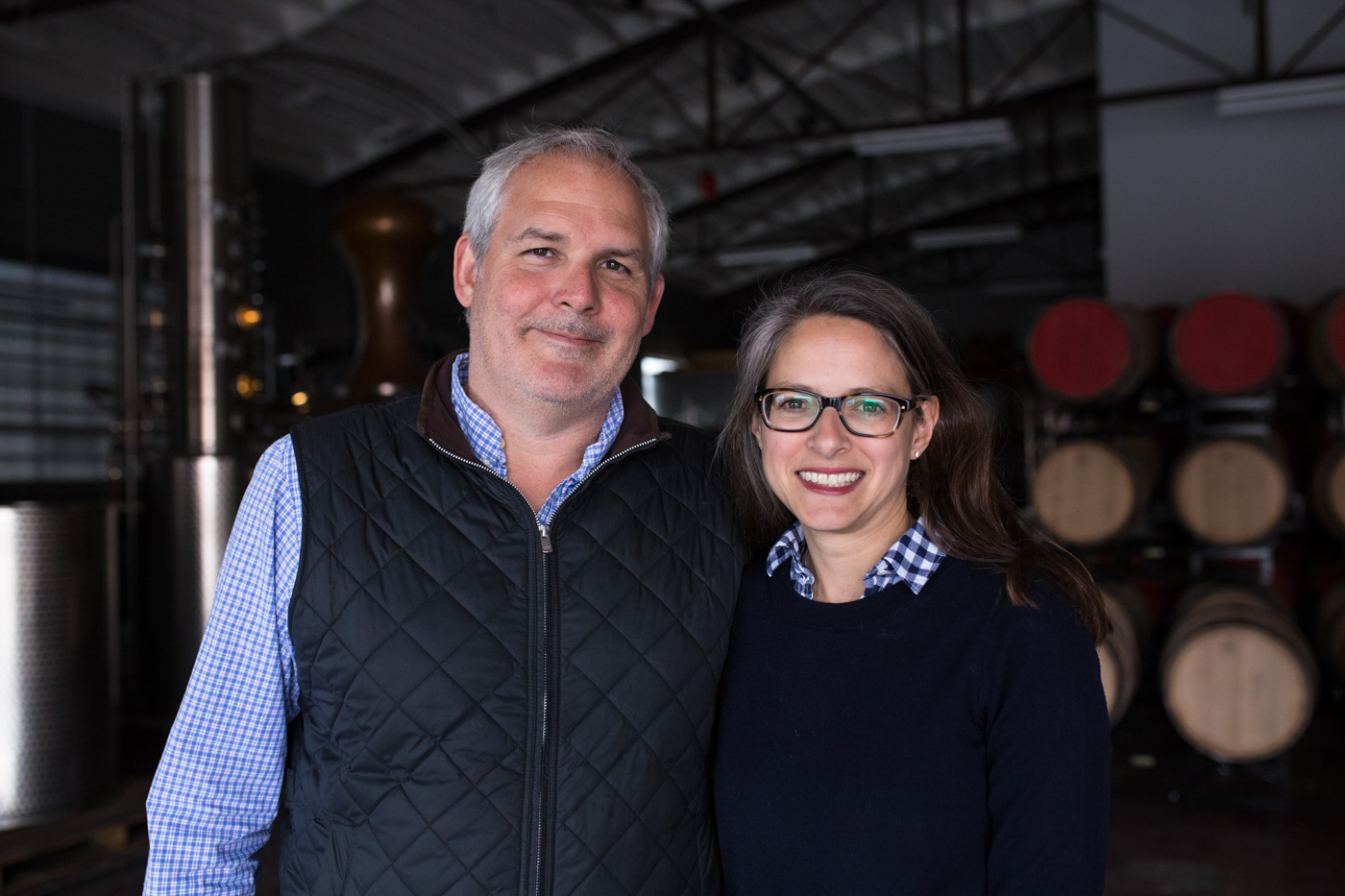
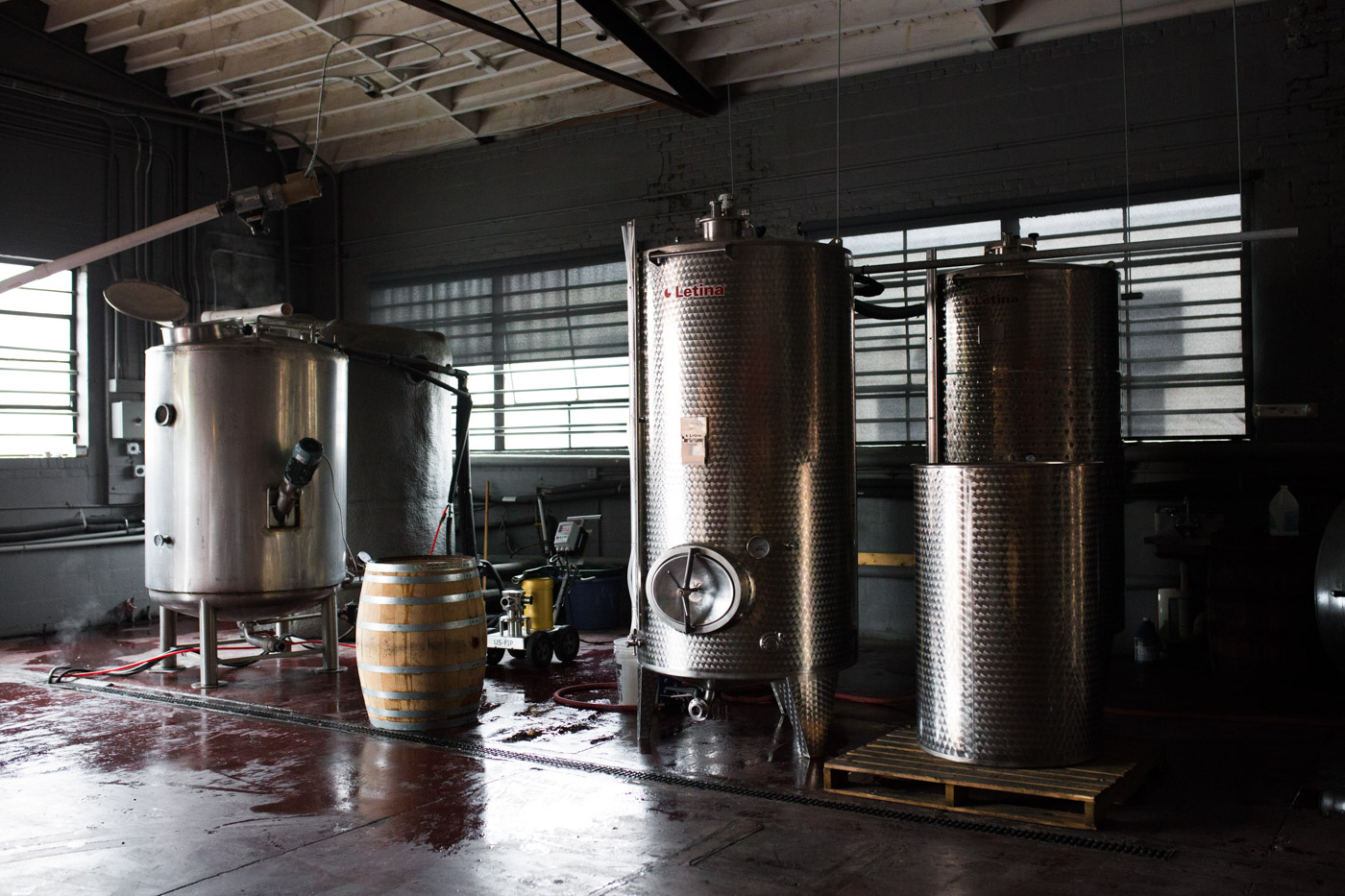
After tinkering with home brewing, Blackwell wanted to open a brewery at first. He related to brewing because he was a bread baker; but Marshall, with a long love of whiskey, had other ideas.
“I brought bourbon to the marriage,” Marshall says. “Growing up in South Carolina, my dad worked, and when he would come home at the end of the day he’d make my mom an old fashioned. They’d go into the study and talk for an hour before dinner. That was their tradition. It was a really peaceful time of day.” When she got older, she began trying some of the whiskies in their liquor cabinet. “I fell in love with it. There was something so settling coming home and having a dram of whiskey,” she says.
Marshall’s experience with whiskey is emblematic of the importance of bourbon in the region. It has long been one of the most beloved Southern spirits; Bourbon County is in Kentucky, as are many distilleries big and small. The South is home of the mint julep and moonshine—some of the driving forces behind the cocktail revival.
When the couple opened High Wire, they knew their business would be organized around bourbon. They also knew they needed to make other spirits to create cash flow and to support their whiskey production, as it takes time to age. They traveled the country visiting distilleries and talking to production teams. But when they returned to Charleston, they leaned on what they knew—Southern agriculture—although that was originally more about consistent raw materials than quality of ingredients. “My family has been in the farming business for centuries,” says Marshall. “All they grow now are row crops—things you can’t eat, like ethanol corn, soybeans for oil, and cotton. Using local products was not something we felt was really possible without doing a lot of work, and at that point there was so much work in front of us.”
They started with sorghum, a drought-resistant cereal grain, because they were able to easily get their hands on it. They didn’t do much to manipulate the flavor, and the resulting whiskey made them consider the concept of terroir. “It smelled like apples in the distillery,” Marshall remembers. “It made us ask if there’s an apple orchard next to the farm.” They fell in love with sorghum, which is now the only sweetener they use.
It spurred their decision to use local crops, while based on flavor and quality, which also helped them cultivate their identity. Blackwell says, “That was when a lightbulb went off. When you put an ingredient in the mash—just put in some yeast and try to do as little as possible—and then it comes out and tastes completely different from other ingredients, it’s not just alcohol.” This led to experimentation with other local crops, including a sugar cane for an agricole rum, and a Bradford watermelon brandy.
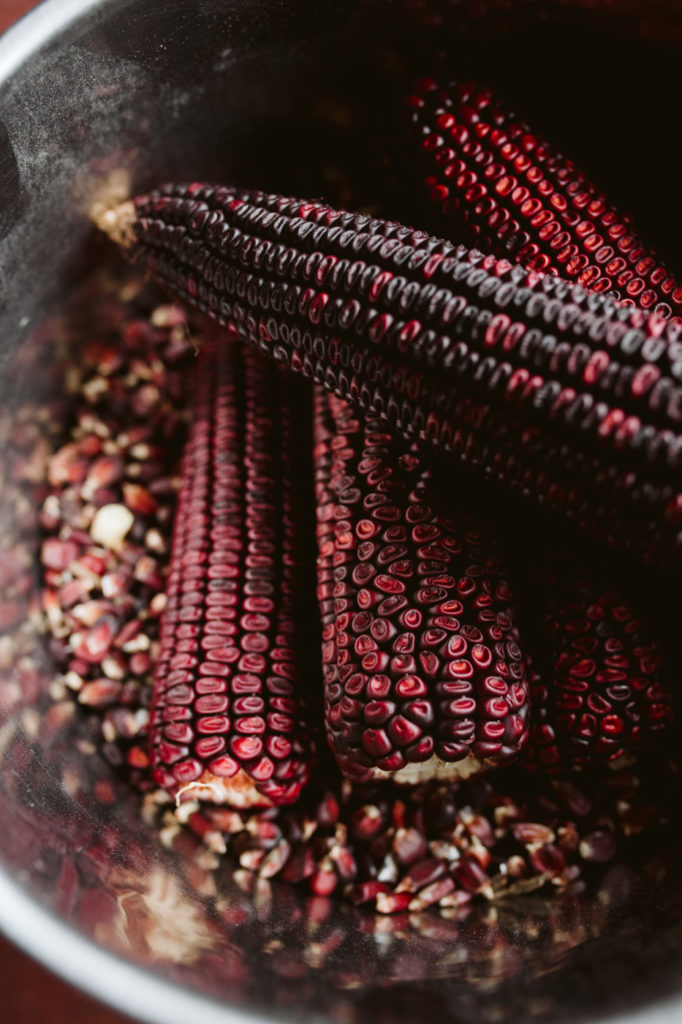


For the next phase of their whiskey production, enter Jimmy Red corn, via Glenn Roberts, founder of Anson Mills. Roberts started Anson Mills in 1997 as a way to preserve food heritage through native seed collecting. His work was inspired by rice, but really began when he found antebellum corn in a moonshiner’s yard in rural South Carolina. The quest eventually led him to Jimmy Red corn, which was used in illegal whiskey production during Prohibition. According to Roberts, Jimmy Red had made its way from Appalachia to the Sea Islands off the coast of Savannah, Georgia, and then to James Island, just south of Charleston, which is where the cobs he found were grown.
Roberts credits Ted Chewning, a James Island native, with saving Jimmy Red from extinction. Chewning knew moonshiners whose families had been growing it since they had been enslaved. “They gave it to Ted and said, ‘Our dad was making whiskey out of this corn his entire life and we don’t want this corn to go away.’ It’s really special,” says Roberts. It was down to its last two cobs when Chewning passed it along, knowing Roberts would be able to bring it back from the brink of extinction.
In order to do this, Roberts turned to chefs, enlisting Sean Brock of Husk and McCrady’s fame. Brock was immediately interested and incorporated it into his cooking. “Sean really kickstarted the Jimmy Red phenomenon and got into the lexicon in Charleston by putting it on the plate. He was using it for cornmeal and was really passionate about it,” Marshall explains.
When Marshall and Blackwell heard Jimmy Red was originally used for distilling, they got in touch with Roberts through a friend and told him they were interested in trying it out in a whiskey. “Glenn told us it was going to be, hands down, the finest whiskey corn we’d ever find. At that point, there wasn’t enough around to distill,” says Marshall. But that didn’t stop Marshall and Blackwell. They joined forces with Roberts, Dr. David Shields (a professor at the University of South Carolina), and Dr. Brian Ward, an agricultural research scientist at Clemson University who was looking for experiments. The team, all invested in preserving landrace grains, used Clemson’s research fields to plant two-and-a-half acres of Jimmy Red for its inaugural run.

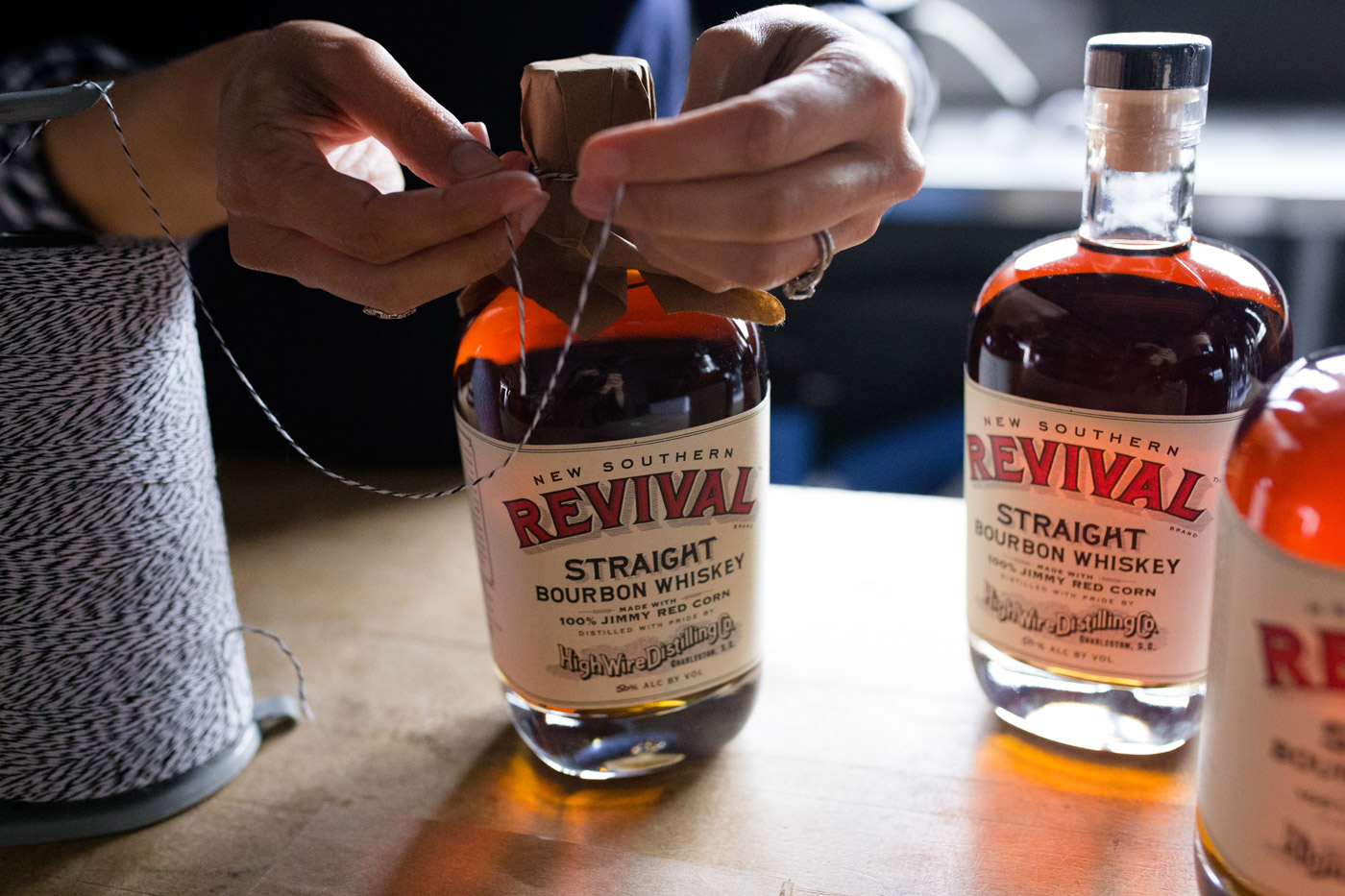
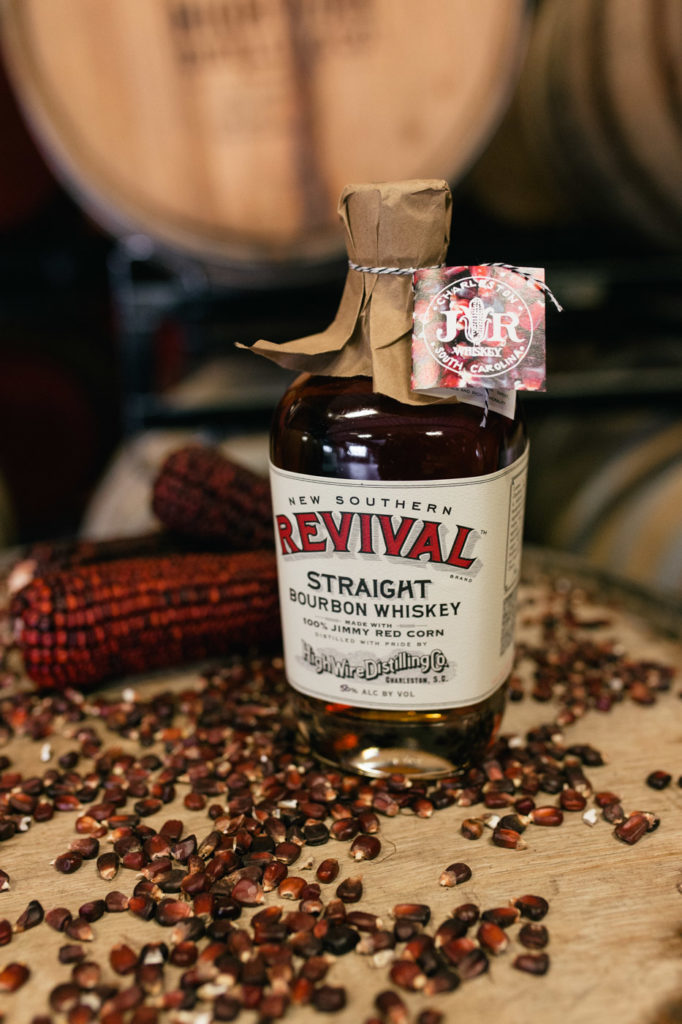

They carefully cultivated their plot of the corn. “I went out to the field and ran behind the tractor as the seeds were going in the ground,” Blackwell says. “Glenn was with us, Brian was with us, Ted was with us all through this process.” Blackwell and Marshall cared for the corn with the attentiveness of parents-to-be—taking pictures of every development stage, and even singing to the ears. It rained the week before they were supposed to harvest it, and it needed to be picked earlier than expected. They enlisted as many friends as they could to help with the task, and this community effort allowed them to save the crop from ruin. “It was the best day,” remembers Marshall. “It was so special for that to be our first harvest.”
High Wire wasn’t yet equipped with a mill at that point, so Roberts cleaned and milled the corn for them. When it arrived at the distillery, they cooked the mash—which was one hundred-percent corn, a rarity for bourbon, as it only needs to be fifty-one-percent corn to qualify as such—and put it into the fermentation tank. That’s when they discovered just how unique Jimmy Red is. “The most remarkable thing about Jimmy Red is when it ferments, it creates a three-inch thick oil cap on top of the mash, which we had never seen before. It was just unheard of,” says Marshall. “This was three inches thick, beautiful corn oil that smelled like—for lack of a better reference—banana Laffy Taffy. We blended it all back in the mash and sent it over to the still,” says Marshall.
They didn’t know what to expect from the flavor. “I was nervous,” says Blackwell. “When it finally came off the still a week later and I tasted it, I was like, ‘We should have grown fifty acres of this.’” The bourbon was viscous, with a full mouthfeel, slightly vegetal with a little minerality, and a bit of that banana Laffy Taffy flavor Marshall smelled in the mash. They knew they were tasting something reflective of South Carolina agriculture. “It had its own distinct flavor. Where it’s grown really does matter,” Blackwell remarks.
After two years of aging, High Wire released their first lot of Jimmy Red bourbon in December of 2016. It still felt like an experiment to Marshall and Blackwell; they didn’t know what to expect. In fact, Marshall was concerned it wouldn’t sell. But the morning it went on sale, they opened their doors at 11 a.m. and people came in droves. “It was total chaos,” says Marshall, who was working the tasting room that day. “In the moment, I was crossing my fingers that we had enough product. We had sales going on in the tasting room and we’d opened it up to reserve online. We had set a limit in the register system, and eleven minutes in, it said done.”
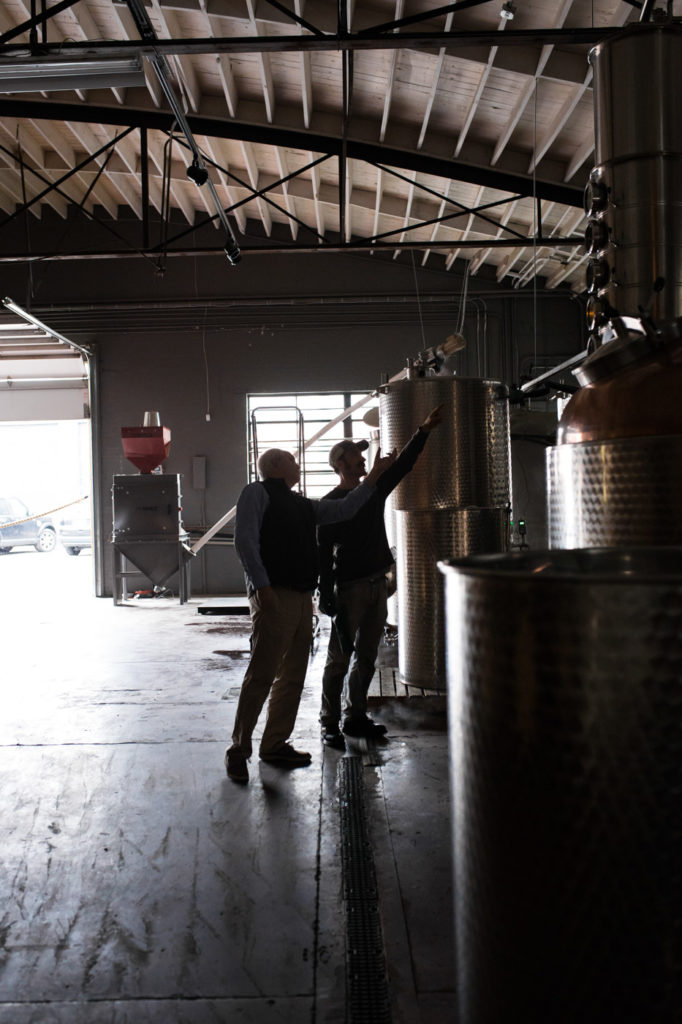
Today, they grow Jimmy Red corn on three different farms in South Carolina. Their success with their first run validated their dedication to using quality grains to achieve the best possible flavor. The proof was in the bottle. At High Wire, they consider Jimmy Red and their use of landrace grains the future of their distillery. Although distinctly Southern in both flavor and mission, it brings them joy to see their spirits on the shelves in bars and restaurants in other parts of the country. “It’s fun to take what we do out of the region and have a little bit of South Carolina on a bar in New York. It’s really exciting for us,” says Marshall.





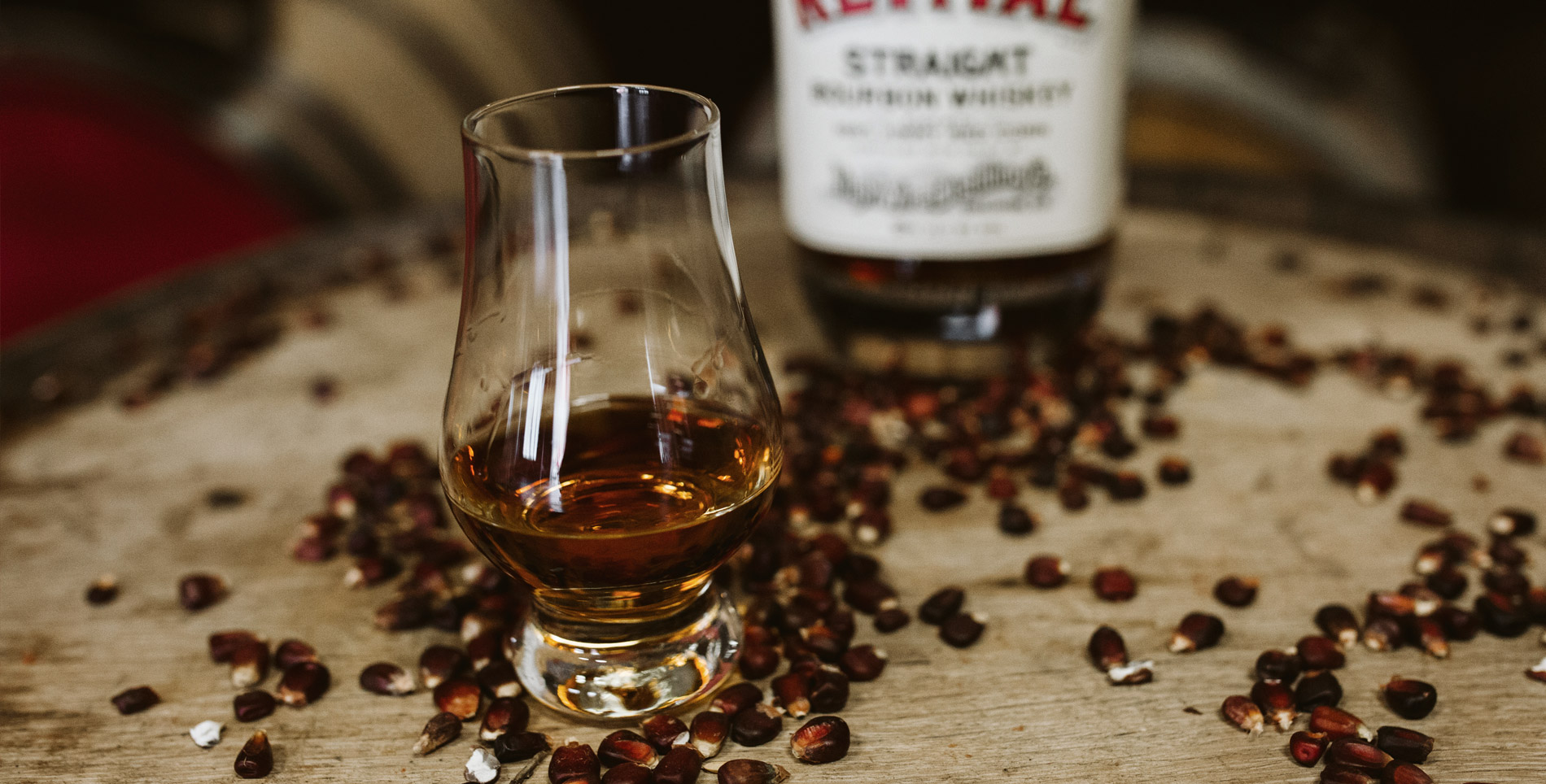

Our comments section is for members only.
Join today to gain exclusive access.